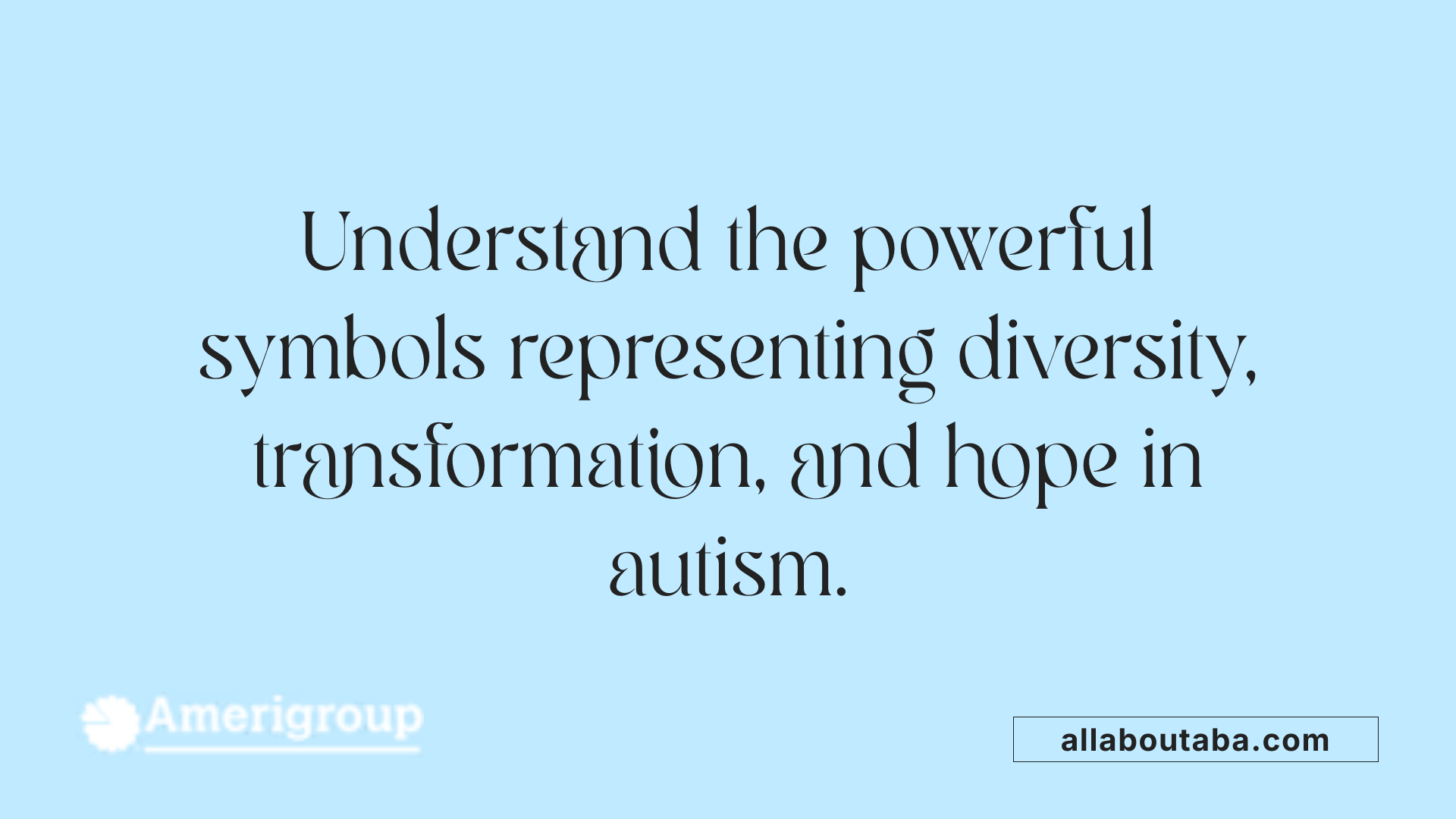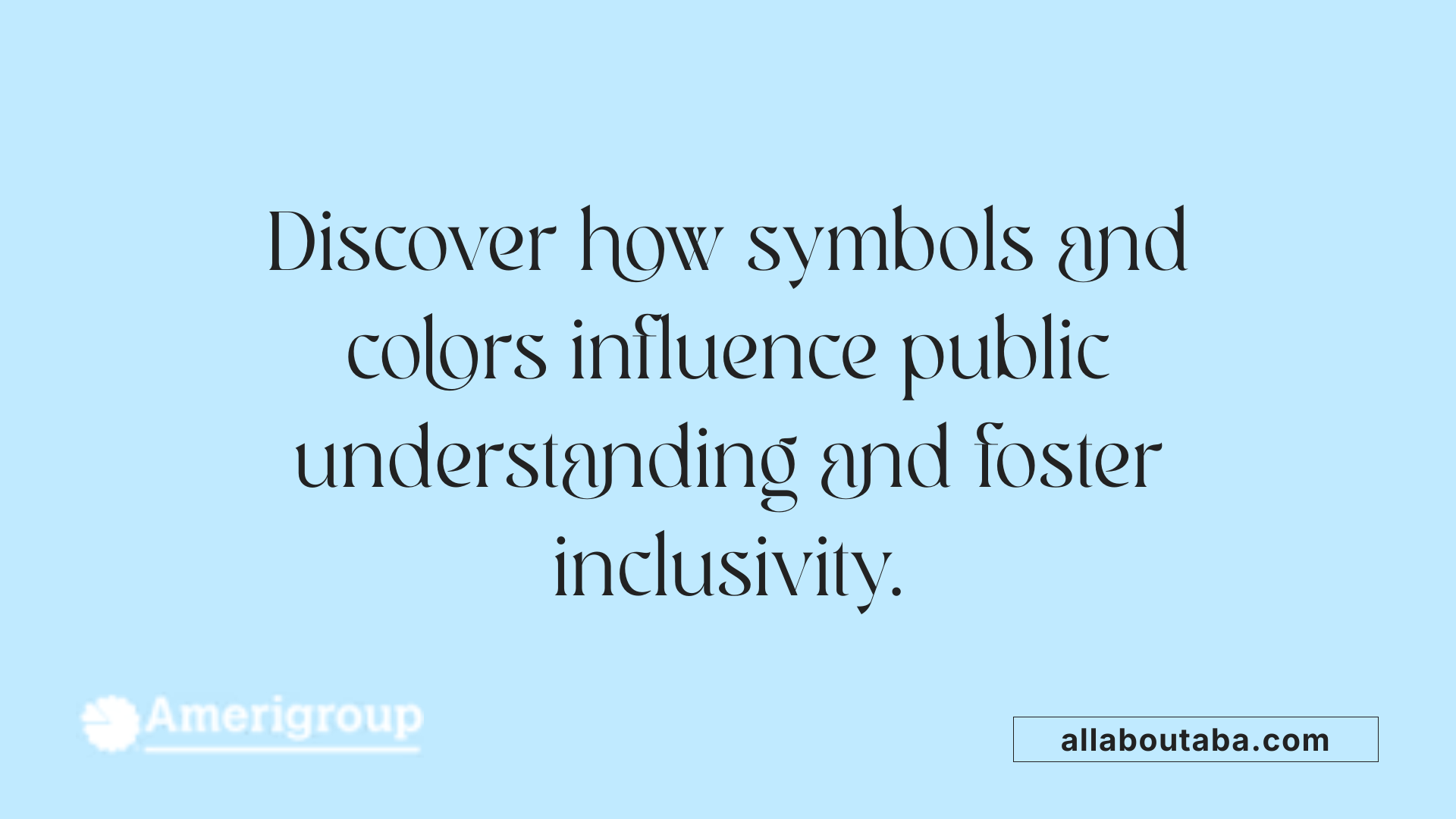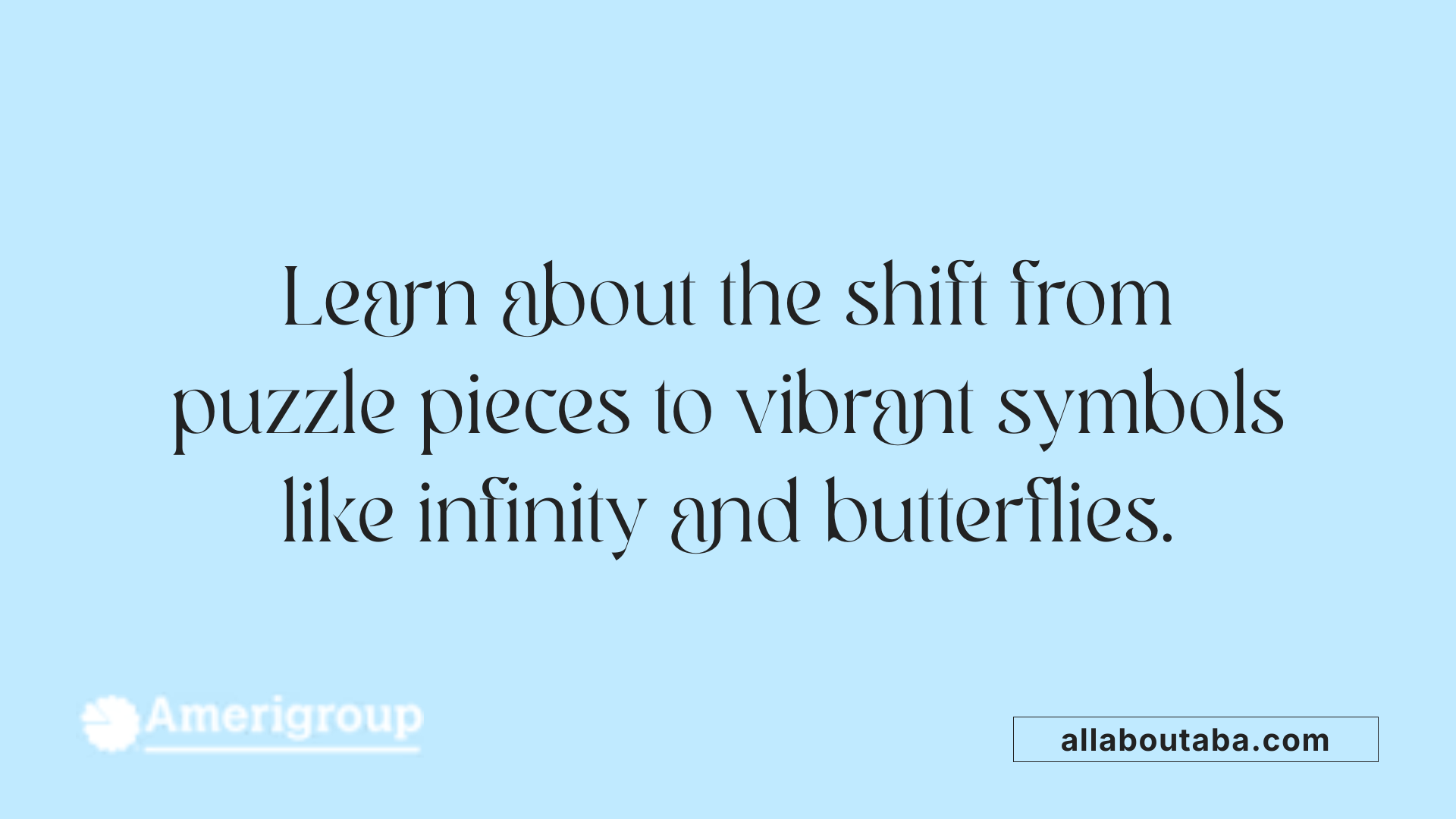A Deep Dive into Autism's Visual Language
Autism awareness is visually communicated through a variety of symbols and colors that embody hope, diversity, and acceptance. From the iconic puzzle piece to the rainbow infinity symbol, these images and hues serve as powerful tools for education and inclusion. Exploring their history, meanings, and evolving use provides insight into how the autism community is fostering understanding and embracing neurodiversity.
The Origins and Evolution of the Puzzle Piece Symbol

What is the history of the puzzle piece as a symbol for autism?
The puzzle piece became a symbol for autism in 1963 when adopted by the UK’s National Autistic Society. It was chosen to represent the complexity and diversity of autism, illustrating that understanding autism is like fitting together pieces of a puzzle. Over the years, this symbol gained worldwide recognition and became synonymous with autism awareness campaigns, especially through organizations like Autism Speaks, which popularized the blue puzzle piece logo.
Initially, the puzzle piece was seen as capturing the mysteries and unknowns surrounding autism. Its bright, multi-colored design was meant to reflect diversity and hope within the autism community. However, the symbolism did not go unchallenged.
What are the controversies surrounding its use?
The puzzle piece symbol faced criticism for implying that autism is a deficiency or something incomplete that needs fixing. Critics argued that this view promotes stigma and reinforces negative stereotypes about autistic individuals. Some felt that portraying autism as a puzzle suggests that autistic people are missing pieces, which can be demeaning and overlook their strengths and unique qualities.
As awareness grew, many in the autism community and advocacy groups pushed for more positive and inclusive symbols.
How has the community transitioned to more inclusive symbols?
Responding to criticism, advocates introduced alternative symbols like the rainbow infinity symbol and the butterfly. The infinity symbol, especially in rainbow colors, emphasizes neurodiversity, endless potential, and acceptance of all abilities. The butterfly symbolizes transformation, diversity, and the individual growth of autistic people.
Today, these newer symbols are increasingly favored as they promote a more positive, inclusive view of autism. They highlight diversity, acceptance, and the value of every individual rather than focusing on perceived deficiencies.
| Symbol | Origin/Date | Meaning | Criticism/Notes |
|---|---|---|---|
| Puzzle Piece | 1963, UK | Complexity, diversity, mystery of autism | Implies incompleteness, fixing stigma |
| Blue Puzzle Piece | 2008, Autism Speaks | Awareness, support | Criticized for negative implications |
| Infinity Symbol | 2005, global | Unlimited potential, neurodiversity | Emphasizes acceptance |
| Butterfly | 2000s | Transformation, diversity | Positively represents change |
Symbols of Diversity and Hope

What symbols are associated with autism, and what do they represent?
Various symbols serve to express different aspects of the autism community. The most recognized is the puzzle piece, which has been used since 1963 and symbolizes the complexity and diversity of autism. Its multicolored variants, like the puzzle piece ribbon, emphasize the rich diversity within the spectrum. However, the puzzle piece has faced criticism for implying that autism is something missing, suggesting the need for a replacement symbol.
Enter the butterfly, introduced as a more positive symbol highlighting transformation, individuality, and beauty. It represents change and diversity, celebrating the unique developmental paths of autistic individuals.
In 2005, the rainbow infinity symbol emerged as a powerful image representing endless possibilities and neurodiversity. This symbol underscores the capacity for society to embrace and accommodate diverse minds, emphasizing that neurodiverse individuals enrich society in countless ways.
Color plays a significant role, with blue being the primary hue linked to autism, thanks to the 'Light It Up Blue' campaign by Autism Speaks. Blue conveys calmness, trust, and support. Red, representing strength and passion, and yellow, symbolizing hope and positivity, highlight the positive qualities and talents of autistic people.
The rainbow spectrum and the rainbow infinity symbol symbolize the vast range of abilities and experiences within the autism spectrum, showcasing diversity and potential. These symbols foster acceptance and encourage a broader understanding of what it means to be autistic.
Overall, these symbols—puzzle pieces, butterflies, infinity, and rainbow colors—serve as tools for awareness and inclusion. They help promote a mindset of acceptance, emphasizing that autism encompasses a wide array of experiences, strengths, and perspectives, all deserving respect and understanding.
Colors as Symbols of Autism Support and Acceptance

What are the common colors used to symbolize autism, and what do they mean?
Major colors associated with autism include blue, red, yellow, and a spectrum of rainbow hues. Each color carries its own significance and contributes to a broader narrative of acceptance and understanding.
Blue is the most recognized color for autism awareness, largely due to the 'Light It Up Blue' campaign initiated by Autism Speaks. It symbolizes calmness, trust, and support, and is used to promote acceptance and understanding. This color is especially prominent on World Autism Awareness Day, April 2nd, when buildings and individuals worldwide adopt blue themes.
Red is a powerful color associated with strength and determination. It highlights the resilience of autistic individuals and reflects passion in advocacy for autism acceptance.
Yellow brings a sense of optimism and clarity. It emphasizes positive traits such as talents, perspectives, and the hopeful outlook of the autism community.
The rainbow spectrum, often represented through the rainbow infinity symbol or multicolored puzzle pieces, depicts the diversity within the autism spectrum. These colors signify the wide range of abilities, experiences, and personalities among autistic individuals, celebrating uniqueness rather than deficits.
Different symbols also incorporate these colors to promote inclusivity. For example, the rainbow infinity sign was introduced in 2005 to symbolize endless possibilities and neurodiversity. Meanwhile, the puzzle piece, representing complexity and diversity, has been embraced in rainbow variants to reflect the spectrum of human experiences.
Overall, these colors and symbols serve not only to raise awareness but also to foster a more accepting and inclusive society that values and celebrates neurodiversity.
The Role of Symbols and Colors in Promoting Awareness and Acceptance

How do symbols influence public perception?
Symbols play a vital role in shaping how society views autism. The puzzle piece, introduced in 1963, was the first widely recognized emblem representing autism's complexity and diversity. Its bright, multicolored design aimed to reflect the spectrum's diversity, but it has also faced criticism for implying that autism is something to be fixed or incomplete.
Over time, alternatives like the infinity symbol and the butterfly have gained popularity. Designed to foster a more positive outlook, the rainbow infinity symbol, first used in 2005, highlights the limitless possibilities and vibrant diversity of neurodivergent individuals. It shifts focus from the idea of fixing to celebrating differences.
Colors also influence perception. Blue, especially through the 'Light It Up Blue' campaign by Autism Speaks, symbolizes calmness, trust, and support. Red stands for strength and passion, yellow reflects positivity and clarity, and the rainbow spectrum encompasses the wide array of experiences within the autism community.
These symbols and colors act as visual tools for advocacy, fostering understanding, reducing stigma, and promoting inclusivity in society.
What is the significance of the infinity symbol in autism awareness?
The infinity symbol, often depicted in rainbow hues, signifies endless potential and the diverse range of abilities among autistic individuals. Since its first appearance around 2005, this symbol has become a representation of neurodiversity—accepting and celebrating all forms of neurological differences.
The infinity symbol's adoption marked a paradigm shift from viewing autism as a disorder needing a cure to recognizing it as part of human diversity. It encourages society to value individuals for their unique perspectives and contributions. The endless loops of the symbol also symbolize hope, acceptance, and inclusivity, reminding us that the possibilities for each person on the spectrum are infinite.
In summary, the rainbow infinity symbol champions a more inclusive mindset, emphasizing that every person has the potential for growth and success within a supportive society.
Moving Toward Positive Representation

How has the field shifted from puzzle pieces to symbols like infinity and butterflies?
The symbols representing autism have evolved significantly over decades. Initially, the puzzle piece became the most recognized icon after being introduced in 1963 by the National Autistic Society. It was meant to symbolize the complexities and mysteries surrounding autism, emphasizing that understanding autism is like solving a puzzle. This symbol was widely adopted, especially by organizations like Autism Speaks, with their blue puzzle piece logo.
However, over time, critics argued that the puzzle piece implied that autistic individuals were incomplete or needed fixing. As awareness grew, the community and advocates shifted toward more positive and inclusive symbols.
Today, the infinity symbol, especially in rainbow colors, has gained popularity. It represents the endless possibilities and diversity within the autism spectrum. Introduced in the 2000s by advocates like Judy Singer, the rainbow infinity symbol emphasizes neurodiversity and acceptance beyond mere awareness.
Similarly, the butterfly has become a meaningful emblem of transformation, growth, and individual uniqueness. It symbolizes the beauty of diversity, change, and hope, offering a more uplifting perspective on autism.
This transition from puzzle pieces to symbols like the infinity sign and butterflies reflects a broader societal movement. The focus is now on celebrating neurodiversity, promoting acceptance, and recognizing the inherent value of autistic differences. The shift marks a move away from viewing autism as a mystery to be solved, towards embracing it as a natural part of human diversity.
How has the autism community contributed to this shift?
Autistic individuals and advocates have played a crucial role in redefining the symbols used in awareness campaigns. By promoting symbols that emphasize acceptance and diversity, they foster a more inclusive narrative. The rainbow spectrum and infinity sign signal a recognition of the wide range of abilities and experiences among autistic individuals. These symbols aim to promote understanding, reduce stigma, and inspire societal support for neurodiversity.
The Continuing Impact of Symbols and Colors in Autism Awareness
Symbols and colors play a vital role in shaping public understanding and fostering acceptance of autism. As awareness efforts evolve, so do the symbols, reflecting a growing emphasis on neurodiversity, hope, and the celebration of individual differences. Moving forward, continued use of positive, inclusive symbols will help promote a society that values and understands the richness of the autism spectrum.
References
- Symbols for Autism: What Do They Mean?
- Autism Colors & Symbols: What They Mean? - AutismCOE
- Symbols For Autism: The Historical Evolution
- Autism Awareness Colors & Symbols: Meanings and Evolution
- What Do the Autism Colors and Symbols Mean? - AngelSense
- Autism Colors and Symbols - Golden Care Therapy
- Symbols for Autism: What Do They Mean?
- Autism Colors: What Do They Mean?
- What Does Being Autistic Mean? - Autism Parenting Magazine







